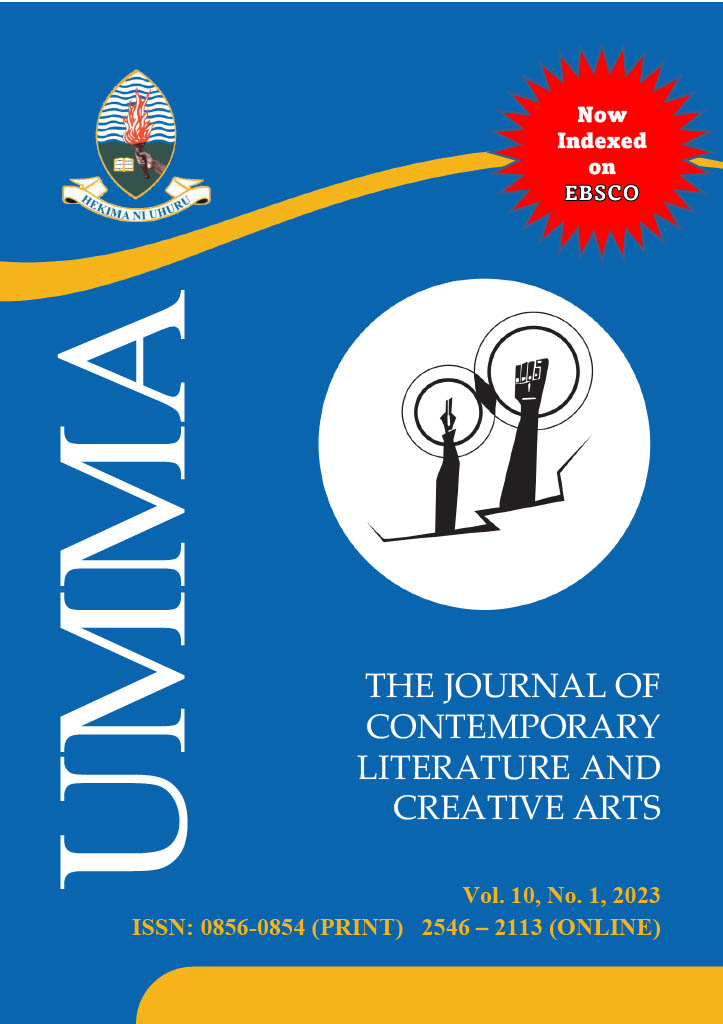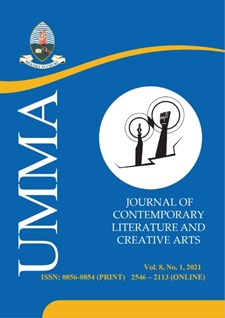Tattooing as a Popular Form of Body Art in Ascendancy among Urban Youths in Tanzania
Abstract
This article explores the increasing popularity of tattoos as body art amidst the negative attitudes and social stigmas attached to them in the context of Tanzania. Specifically, it delves into aspects of the tattoo culture before examining the influence and motivations behind the decision to tattoo. Finally, it evaluates the attitudes of Tanzanians to individuals with tattoos. With recourse to the Group Norms Theory (GNT) serving as a framework for elucidating on the underlying factors prompting young individuals to embrace tattooing, this article qualitatively examines data to unravel the complexities of the phenomenon under study. The data came from in-depth interviews, focus group discussions, and field observations. The article demonstrates how tattoos bearers value them for the personal symbolism they engender and as a form of decorative self-expression. Other push factors towards tattooing include peer pressure, social media, celebrities, and commemoration. In the context of Tanzania, this article provides insights that could help debunk the misconceptions surrounding tattoos and demystify this intriguing body art, and, hopefully, pave the way to more nuanced and inclusive debate and understanding of this type of art.
Keywords:
Tattooing practices, tattooing engagement, tattooing stereotypes
References
Beckwith, C., & Fisher, A. 2012, Painted bodies: African body painting, tattoos, and scarification, Rizzoli, New York, NY.
Bianchi, R. S. 1996, Tattooing and skin painting in the ancient Nile Valley in Celenko, T. Egypt in Africa (pp. 81-83), Indianapolis University Press, Indianapolis, IN.
Caplan, J., & Maurer, D. 2018, Tattooing: An interdisciplinary survey of historical and contemporary practices, Sociology Compass, vol. 12, no. 10, e12615.
Dryjanska, L. 2015, A social psychological approach to cultural heritage: memories of the elderly inhabitants of Rome, Journal of Heritage Tourism, vol. 10, no. 1, pp. 38-56.
Fiksa, R. (2021). Tribal Tattoo Encyclopedia. (R. Fiksa, Ed.) Radomir Fiksa
Flaxman, S. 2013, The philosophical functionality of the tattoo: a philosophy of art, Revision Fairy Press.
Gemori, R. 2018, Polynesian tattoos: 42 Modern tribal designs to color and explore, Shambhala Publications, Boulder, CO.
Green, T. (2012). The Tattoo Encyclopedia, Simon and Schuster, New York, NY.
Hansoti, B., Kalanzi, J., Lester, R., & Karanja, S. 2014, Tattooing and body piercing in Kenya: a critical review, Global Health: Science and Practice, vol. 2, no. 3, pp. 367-374.
Holt, A. L., & Schreiber, K. L. (2016). Modern and traditional tattooing: A review of the literature and examination of the influence of group norms and social identity, Journal of Social Psychology, vol. 156, no. 5, pp. 447-468.
Irwin, K. 2011, The social construction of the body in Western society, in R. L. Blumberg (Ed.), Gender, family, and economy: The triple overlap (pp. 139-156). Sage Publications, Doi: https://doi.org/10.4135/9781483325415
Kapinga, A. 2017, Body art in Tanzania: the significance of tattooing and piercing among women, african and black diaspora, An International Journal, vol. 10, no. 1, pp. 1-13.
Kordestani, S. S. 2019, Atlas of wound healing: A Tissue Regeneration Approach, Elsevier, Amsterdam, The Netherlands, https://doi.org/10.1016/C2018-0-03292-2
Krutak, L. 2015, The cultural heritage of tattooing: A brief history, Karger Publishers, Basel, Switzerland.
Laux, P., Tralau, T., Tentschert, J., Blume, A., Alili, L., Sperling, M., & Luch, A. (2018). Organic and vegan tattoo inks: current situation and future challenges, Analytical and Bioanalytical Chemistry, vol. 410, no. 21, pp. 5057-5072.
Levine, J., & Moreland, R. L. 1998, Small groups, in D. T. Gilbert, S. T. Fiske, & G. Lindzey, The handbook of social psychology (pp. Vol. 2, pp. 415-469), McGraw-Hill, New York.
Levy, J. 2008, Tattoos in Modern Society, The Rosen Publishing Group, Inc, New York.
Mallon, S., & Galliot, S. 2018, Tatau: A History of SÄmoan Tattooing, Te Papa Press, Wellington, New Zealand.
Martell, J., & Larsen, A. E. 2022, Tattooed bodies: theorizing body inscription across disciplines and cultures, Springer Nature International, Cham.
McComb, A. 2011, Traditional tattooing among indigenous peoples, Journal of Cultural Geography, vol. 28, no. 2, pp. 209-228.
McCoy, K., & Dufresne, M. 2017, Tattooing: an overview of the process, safety, and regulations, Journal of Legal Nurse Consulting, vol. 28, no. 2, pp. 1-10.
Mgema, E. E. 2021, An inquiry into the meaning and social relevance of body decorations of the Barbaig people of Manyara region in Tanzania, Unpublished, Dar es Salaam.
Pergola, T. 2013, Time Is Cows: Timeless Wisdom of the Maasai, Oreteti Press, Dar es Salaam.
Poli, D. B., Fleenor, M., & Rearick, M. 2012, Drawing on popular culture: using tattooing to introduce biological concepts, The American Biology Teacher, vol. 74, no. 6, pp. 381-385.
Preston, D. B., & Brown, R. A. 2005, Group processes and intergroup relations, in J. F. Dovidio, P. Glick, & L. A. Rudman, On the nature of prejudice: Fifty years after Allport (pp. pp. 301-318), Blackwell Publishing, Malden, MA.
Pryor, J. B., & Reeder, G. D. 2008, Dual psychological processes underlying public stigma and the implications for reducing stigma, Poverty and Human Development, vol. 6, pp. 175 €“186.
Schildkrout, E. 2004, Inscribing the body, Annual Review of Anthropology, vol. 33, no. 1, pp. 319-344.
Serup, J., Kluger, N., & Baumler, W. (Eds.) 2015, Tattooed Skin and Health. Karger Medical and Scientific Publishers, Basel.
Sherif, M. 1954, Experimental study of positive and negative intergroup attitudes between experimentally produced groups: robbers cave study. University of Oklahoma Press, Norman, OK.
Sherif, M., & Sherif, C. W. 1953, Groups in harmony and tension: an integration of studies of intergroup relations, Harper Collins, New York.
Spencer, P. 2004, The Maasai of Matapato: a study of rituals of rebellion, Routledge, London.
Stein, P., & Stein, R. L. 2015, The Anthropology of Religion, Magic, and Witchcraft €”Pearson eText, Routledge, London.
Thompson, B. Y. 2016, Covered in ink: tattoos, women and the politics of the body, NYU Press, New York, NY.
Turner, B. S. 2011, Religion and modern society: citizenship, secularisation and the State, Cambridge University Press, Cambridge.
Downloads
Published
Issue
Section
License
- Authors retain copyright and grant the journal right of first publication with the work simultaneously licensed under a Creative Commons Attribution License that allows others to share the work with an acknowledgement of the work's authorship and initial publication in this journal.
- Authors are able to enter into separate, additional contractual arrangements for the non-exclusive distribution of the journal's published version of the work (e.g., post it to an institutional repository or publish it in a book), with an acknowledgement of its initial publication in this journal.
- Authors are permitted and encouraged to post their work online (e.g., in institutional repositories or on their website) prior to and during the submission process, as it can lead to productive exchanges, as well as earlier and greater citation of published work (See The Effect of Open Access).



